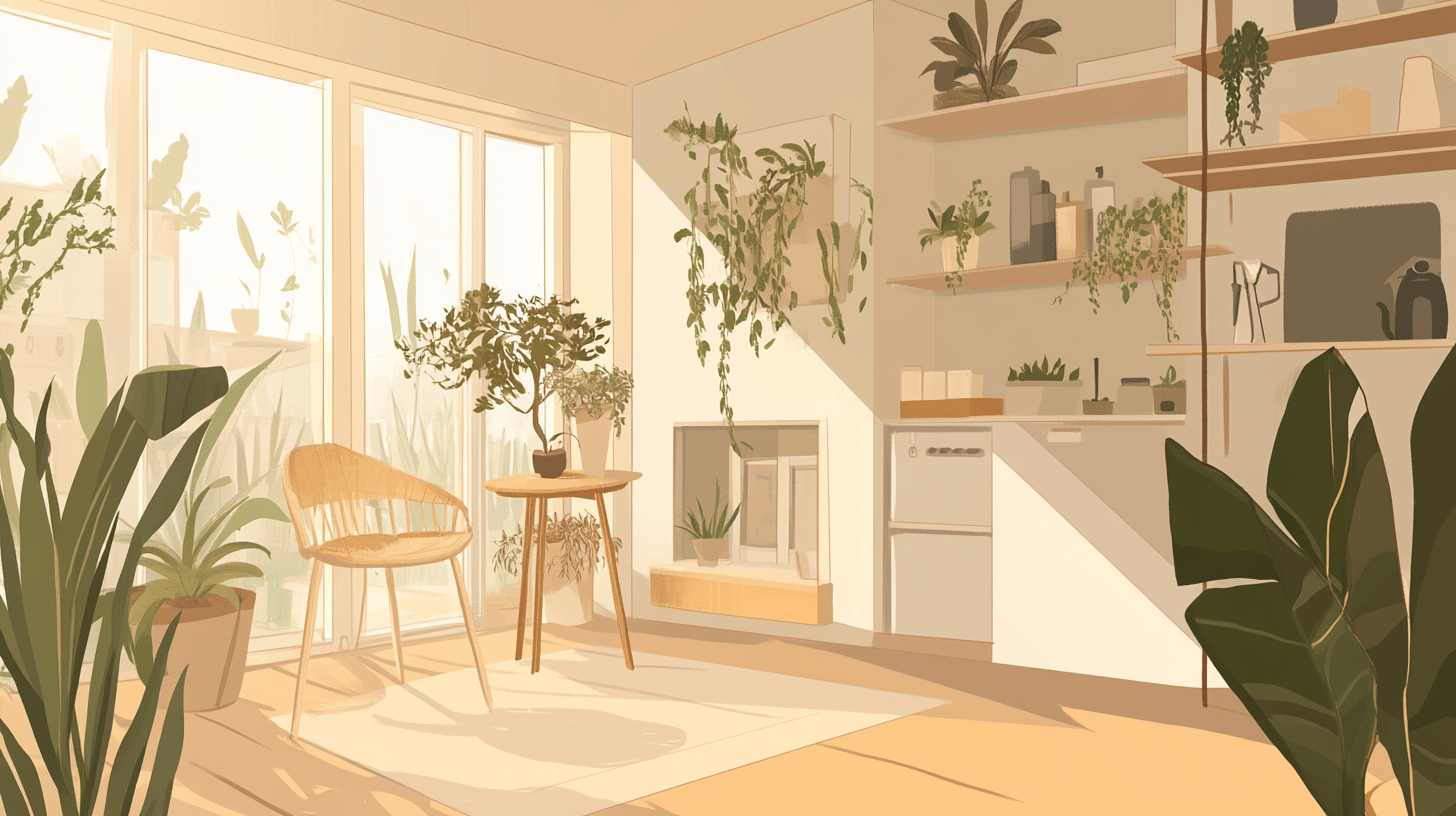The concept of a sustainable home goes far beyond simply using eco-friendly materials; it involves a complete transformation in the way we live and interact with our environment. As concerns about climate change and environmental issues grow, it becomes increasingly important to adopt practices that not only benefit our homes, but also contribute to a more sustainable future. In this post, we will explore several practical tips that you can implement in your daily life to make your home a sustainable home.
1. Reduce, Reuse and Recycle
One of the pillars of sustainability is the famous rule “reduce, reuse and recycle”. By applying these principles:
– Reduce: Eliminate what you don’t need, avoiding excessive purchases of items that could end up becoming waste. – Reuse: Find new ways to use old items. For example, glass jars can be turned into organizers, while old clothes can be turned into cleaning cloths. – Recycle: Separate your waste correctly. Many cities offer separate collection for paper, plastic, glass and metal. Finding out about the recycling rules in your area is a crucial step.
2. Choose Efficient Appliances
Household appliances are major energy consumers. Choosing efficient models that have the Procel A seal is an effective way to reduce electricity consumption. Also, consider appliances that have energy-saving modes, such as: – Refrigerators: Choose models that consume less but still keep food fresh. – Washing machines: Choose one that uses less water and energy, and always use it with a full load to maximize efficiency. – LED Lamps: Replace incandescent bulbs with LED bulbs, which last much longer and consume up to 80% less energy.
3. Take Advantage of Natural Light
Instead of relying solely on electric lighting during the day, make the most of natural light! – Consider the orientation of the house: Plan the layout of the rooms so that they take advantage of sunlight, using large windows and skylights. – Light colors: Paint interior walls light colors to reflect more light and reduce the need for artificial lighting.
4. Use Water Conservation Resources
Water is a precious resource and its conservation is increasingly essential. Some ways to reduce water consumption in your home include: – Install water-saving taps and showers: These items can reduce water flow by up to 50% while maintaining the desired pressure. – Reuse water: Feel free to reinstall a system that uses rainwater to irrigate gardens or flush toilets.
5. Create a Sustainable Garden
Having a garden at home can be an excellent way to contribute to sustainability: – Plant native plants: They are better adapted to the local climate, require less water and do not need chemicals to grow. – Compost: Turning food scraps into fertilizer is a practice that reduces the amount of organic waste and enriches the soil. – Grow food: Set aside space for a vegetable garden in your home. This not only ensures that you have fresh food, but also reduces the carbon footprint associated with transporting food.
6. Choose Natural Cleaning Products
Many conventional cleaning products contain harmful ingredients that are harmful to both human health and the environment. By switching to more natural cleaning products, you will: – Protecting your health: Avoiding harsh chemicals that can cause respiratory and allergy problems. – Using ingredients like baking soda, vinegar and lemon, which are effective and less harmful to the environment.
7. Get informed and communicate
Sustainability starts with awareness. Educate yourself about sustainable practices and share this knowledge with your family and friends. – Offer workshops: If you are good at gardening or composting, consider organizing small workshops. – Create support groups: Brings friends together to discuss and implement sustainable practices. Exchanging ideas can generate great solutions.
8. Dispose of Waste Consciously
All your efforts to be sustainable can be compromised if disposal is not done correctly. When disposing of objects and waste: – Check donation options: Often, materials that you consider trash can be very valuable to other people. – Take electronics and batteries to collection points: Many items should not go into the regular trash and need to be disposed of properly, such as cell phones and batteries.
9. Hire Sustainable Services
When looking for services for your home, choose those that prioritize sustainable practices. – Cleaning services: There are companies that use ecological products and techniques that minimize environmental impact. – Local trade: Whenever possible, choose to buy from local suppliers that use sustainable practices. By doing so, you not only support the local economy, but you also minimize the carbon footprint associated with transportation.
10. Evaluate Your Progress Regularly
Finally, consider regularly evaluating the practices you have implemented. Think about: – What works and what doesn't: This self-examination can provide valuable insights into where you can improve further. – Set new goals: As you get into the habit of making your home more sustainable, feel free to set new goals.
Conclusion
Transforming your home into a sustainable home is not only possible, it’s also rewarding. By adopting small practices in your daily life, you’re not only contributing to preserving the environment, but you’re also creating a healthier and more enjoyable place to live. Start with one or two tips mentioned here and gradually expand your initiatives. Why not share your experiences and tips with us in the comments? Together, we can create a more sustainable future.


